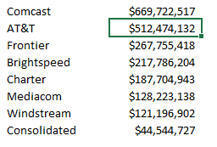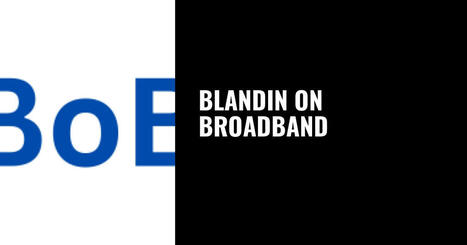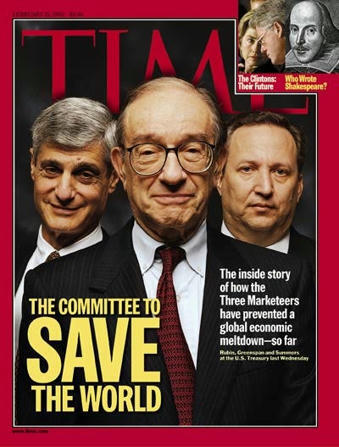 Your new post is loading...
 Your new post is loading...
I remember that within a month after BEAD was announced, there were a lot of predictions that the program was going to be a huge giveaway to the largest telcos and cable companies. There was some reason for that outlook since there had been huge giveaways to large telcos in the past, such as the…
From North Carolina, G.R.E.A.T. shares progress on broadband planning, mapping wins, and building toward countywide fiber
Innocent sites are being delisted from Google because of copyright takedown requests against rampant OnlyFans piracy.
Editorial: Oops!… I Did It Again This week’s confessions offer an insider view of three decisions that looked smart on slides and turned into long-term taxes on reality. Shortcuts dressed up as strategy. -
Splitting 5G was a mistake. A radio engineer’s take: we shipped LTE-with-steroids because politics and vendor timelines won. The icon said 5G; the core didn’t. -
NFVi was stupid. A core head’s verdict: we virtualized legacy into fat VMs, called it cloud, and paid for it with sprawl, lock-in, and invoices. -
The Towerco Trap CFO autopsy of Towerco’s sell-outs, one-time arbitrage in, permanent OPEX out; control gone when we needed it most. If you’ve seen this up close, or you’ve got a different sin to confess, tell me.
Submit your confession: here
Comcast announced a major milestone expanding ultra-fast internet access across rural parts of Florida.
The latest bleak new AI slop niche are “nostalgia” videos about how good the 1980s and 1990s were. There are many accounts spamming these out, but the general format is all basically the same. A procession of young people with feathered hair wonder at how terrible 2025 is and tell the viewer they should come back to the 1980s, where things are better. This video is emblematic of the form:
The Worthington Globe… Many local companies are working together to bring enhanced broadband services to underserved, rural Nobles County residents, using approximately 637 miles of fiber to provide high-speed internet to 1,550 households and sites. Bill Loonan, general manager of Lismore Cooperative Telephone Company, met with Nobles County commissioners and other project stakeholders Wednesday morning…
President Donald Trump's war on DEI has ensnared a giant merger that promises to remake telecommunications from Connecticut to California, where a battle has quietly simmered this summer. At stake is the $20 billion marriage of Verizon and Frontier Communications as the much larger Verizon swallows Frontier, a dominant player in Connecticut that was based in the state until 2023. Beyond that, this is as clear a case as we've seen of Trump using his muscle to bend, and maybe break, corporate behavior in America to suit his goals.
From church hubs to local businesses, Wave 7 is expanding internet access in rural North Carolina — proving what community-rooted broadband can achieve.
New Mexico's $432.9 million BEAD plan is now under review by federal NTIA authorities, according to the state's broadband office.
A Wisconsin city along the western shores of Lake Superior has launched an open-access city owned fiber network.
Economists predicted doom if the Federal Reserve were controlled by the President. Trump has moved in that direction, but Wall Street doesn't care. Is 'independence' not what we think?
The Answer to Better Broadband is ‘Blowin’ in the Wind’ in Minnesota
Long before USF, ARPA, CPF, SLRF, BEAD, and the next sure-to-be acronym’d broadband program, Minnesota was at the forefront of funding broadband connections in rural Minnesota. Minnesota’s “Border to Border” Broadband Infrastructure grant program was established by Minnesota’s state legislature in 2013 with bipartisan support. Ever since, the program has been investing funding in broadband infrastructure, prioritizing unserved and underserved areas. To gain perspective on just how long ago this was, Prince was still alive when Border to Border launched (RIP, Sometimes it Snows in April). Recently, I sat down with Bree Maki, Minnesota’s executive director of the Office of Broadband Development (OBD), to catch up on where Minnesota was with their broadband efforts and the BEAD process. I knew from speaking with her prior, Minnesota has a 2026 statutory goal from the state legislature that established the goal to connect “all Minnesota businesses and homes with access to at least one provider of broadband with download speeds of at least 100 megabits per second and upload speeds of at least 20 megabits per second.”
|
Crypto used endless spending to get rid of all political opposition. Now Mark Zuckerberg will do the same against those who want to regulate AI. Plus, a ruling on tariffs and a dentist revolt.
When ChatGPT went viral, leadership teams rushed to understand it, but their employees had already beat them to the chase. Workers were already experimenting with AI tools behind the scenes, using them to summarize notes, automate tasks, and hit performance goals with limited resources. What started as a productivity shortcut has evolved into a new workplace norm. According to Microsoft’s Work Trend Index, three in four employees are using AI at work—and nearly 80% of AI users at small and medium-size companies are bringing their own tools into the workplace; that number is 78% for larger organizations. These tools range from text generators, such as ChatGPT, to automation platforms and AI-powered design software. This bottom-up phenomenon is known as Bring Your Own AI, or BYOAI. It mirrors the early days of “bring your own device” (BYOD) policies , when employees began using their personal smartphones and laptops for work tasks—often before employers had protocols in place to manage them. Those policies eventually evolved to address security, data privacy, and access control concerns. But with BYOAI, the stakes are even higher.
Here on a holiday I’m posting a more light-hearted blog, but one that shows the degree to which people have become attached to their cellphone. D30, a manufacturer of hard cases for cellphones, conducted a survey across the U.S. and the U.K. asking about how people feel about their cellphone. Some of the questions were…
Firefly Fiber Broadband, a wholly-owned subsidiary of Central Virginia Electric Cooperative (CVEC), is thrilled to announce a major milestone: 40,000 fiber broadband connections now serve homes and businesses across central Virginia. This achievement marks a significant step forward in Firefly’s mission to transform lives and connect communities. To commemorate the occasion, Firefly hosted a celebratory […]
ShinyHunters, the attacker group behind the breach, gained access by impersonating an IT help desk to a Google employee.
Three sources described how AI is writing alerts for Citizen and broadcasting them without prior human review. In one case AI mistranslated “motor vehicle accident” to “murder vehicle accident.”
AT&T's deal to buy EchoStar's spectrum means Boost will no longer be a fourth facilities-based carrierBut Boost's struggles mean it was hardly a true comp | AT&T's deal to buy EchoStar's spectrum means Boost will no longer be a fourth facilities-based carrier. What does that mean for consumers?
Abstract This paper offers a critical political economic analysis of the adoption of the ATSC 3.0 broadcast standard by public broadcasters in the US. ATSC 3.0 promises enhanced video and audio quality, and IP-enabled possibilities like mobile reception, emergency communication, datacasting, and 5G improvements. We argue that beneath the hype of ATSC 3.0, the widespread and faithful lobbying for the adoption of the standard by local stations as a means for rejuvenating public broadcasting in the digital world challenges the normative democratic social totality of publicly funded media. Specifically, we argue that the push for economic innovation through ATSC 3.0 adoption furthers the subsumption of public broadcasting into the auspices of the private market.
SpaceX has beef with how Louisiana and Virginia classified “priority broadband projects” for BEADStarlink thus far was awarded roughly $16M in BEAD funds
A veteran-owned internet service provider in New Mexico is calling on NTIA to 'prevent wasteful overbuilding.'
A recent universal broadband service plan for 18 Vermont towns was delivered ahead of schedule and under budget, officials say.
Five years ago, when the world was still in a fervor about 5G technology, Charlie Ergen made a multi-billion-dollar bet on the relatively nascent concept of open RAN. Licensed to be a fourth nationwide US mobile operator, after the merger between T-Mobile US and Sprint had reduced the number to three, his Dish Network business would build its radio access network – the RAN in open RAN – not with the standard choices of Ericsson and Nokia but using a fresh lineup of younger and partly American faces. Now grizzled veterans of the open RAN movement, they have been aged and scarred by the Dish experience, and Ergen's entire scheme is in ruins. Open RAN's big selling point at the time was interoperability.
|




 Your new post is loading...
Your new post is loading...


























